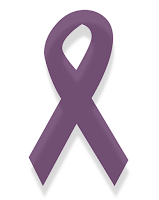On average, an estimated 500 Canadians are diagnosed with cancer each day. Out of each type of cancer that exists, Melanoma is one of the fastest rising cancers in the country. As many as 6,800 Canadians will be diagnosed with Melanoma; 3,700 of those diagnosed are men, while 3,100 are women.
Melanoma occurs when the skin has been exposed to too much ultraviolet radiation – either from natural sunlight or other forms of UV radiation such as tanning beds – which causes a change in the skin cells. As a result, a malignant tumour or tumours will form in the melanocytes. The melanocytes are cells that produce melanin, which is responsible for the pigmentation of your skin and eyes. Keeping the skin protected at all times is important. The skin is the body’s largest organ and is culpable in protecting the skin from injury, infection and sunlight. The skin is also plays an essential role in keeping your body temperature under control by ridding itself of bodily waste via the sweat glands. Malignant tumours can also oftentimes metastasize to different parts of the body, and it is not limited to just the skin. Albeit rare, Melanoma can be found anywhere in the body that melanocytes are present, including the mucosal tissue (Mucosal Lentiginous Melanoma), internal organs, and the eyes (Intraocular Melanoma.)
The most common and earliest symptoms that an individual with Melanoma may present with is changes to otherwise normal-looking skin or moles. While it is not uncommon to have moles (the average person has as little as 10 moles and as many as 40), they should not change in size, shape or colour, be more than 6mm in length, or feel itchy or painful. Late signs of Melanoma include enlarged lymph nodes in the neck or under the arms, feeling out of breath, chest pain, headaches, nausea, fatigue, loss of appetite and weight loss.
While Melanoma is one of the deadliest forms of skin cancer, taking some straightforward protective measures against ultraviolet radiation can also help to prevent it. If spending a protracted amount time outdoors, you should always ensure that you have the proper protection against the sun’s harmful UV rays. Wearing sunglasses and other protective articles of clothing, applying sunscreen and staying in the shade are all crucial factors in avoiding Melanoma. For more information on how you can avoid other heat-related illnesses, read Dr. Ali Ghahary's article on summer health and safety tips.



